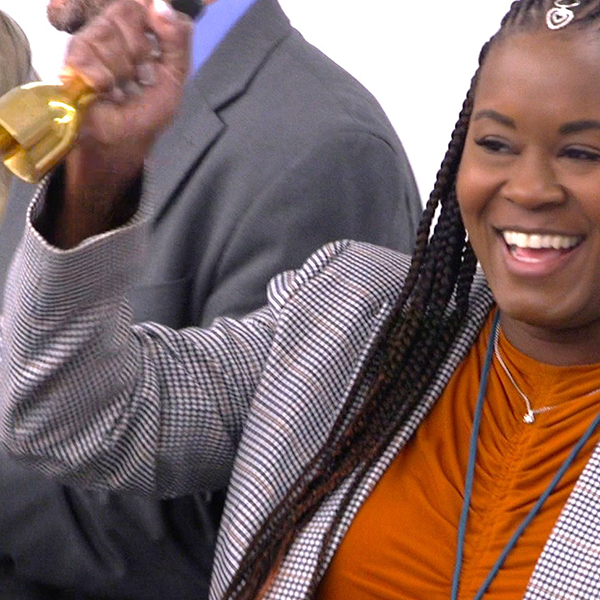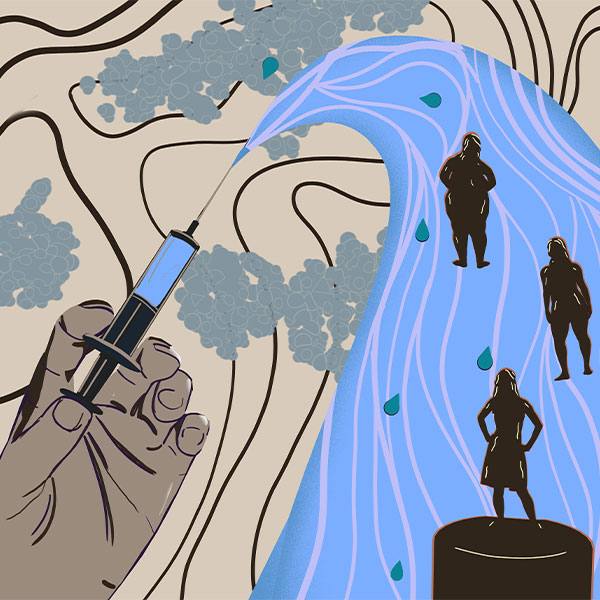-
Mayo Clinic in a new era of discoveries with rapid genome sequencing

National DNA Day on April 25 marks the discovery of DNA's double helix in 1953 and the Human Genome Project’s completion in 2003.
The discovery of DNA's double helix structure 70 years ago propelled a revolutionary shift toward individualized medicine. Today, new genome sequencing technologies could help Mayo Clinic scientists fuel a new whirlwind of genomics discoveries.
One of the sophisticated sequencing technologies, arriving at Mayo Clinic in May, will give the ability to put a patient's DNA sample into the machine at noon and have their entire genome sequenced by the next morning.
"It's an exciting time in the world of DNA sequencing and our ability to really harvest information from the genome to improve human health," says Eric Wieben, Ph.D., director of Mayo Clinic Center for Individualized Medicine's Medical Genome Facility.
Whole genome sequencing paints a detailed picture of a person's unique biological characteristics — from hair and eye color to genetic mutations linked to diseases. Sequencing results can help pinpoint individualized diagnoses, treatment options and prevention.
Dr. Wieben has dedicated his career to investigating the human genome and translating genomic findings into patient care. He continues to be amazed by the individual variability of DNA sequences in different people.
He says one of the most impactful features of another new technology is the ability to rapidly and accurately determine the sequence of lengthy DNA segments up to 20,000 letters, or nucleotides, long (the As, Cs, Gs and Ts).
"Our previous DNA sequencing approach has been to focus mostly on the small 3% of the human genome that codes for proteins, called the exome, where most known disease-causing mutations occur," Dr. Wieben says. "But with this new technology, we'll have a much-improved ability to dig into that sequence on a granular level."
The 6 billion letters of DNA code in the nucleus of a human cell are arranged into 46 distinct chromosomes. The DNA in each chromosome is arranged in a linear string of millions of nucleotides. Mainstream sequencing technologies have typically been able to sequence only a few hundred letters of DNA code at a time.
Dr. Wieben says reassembling millions of short fragments back into chromosome-sized pieces is a daunting process — particularly because the genome contains some short sequences repeated hundreds or thousands of times.
“Imagine a puzzle depicting a scene at a beach on a sunny day. There are a lot of blue pieces from both the sky and the water and only a little bit of sand with perhaps a few palm trees. When that puzzle is cut into 100 big pieces instead of 10,000 small pieces, it’s a lot easier to assemble. The long reads from the new technologies have the same advantage in helping us to assemble the full sequences of each chromosome from each patient.”
He emphasizes that every person’s DNA sequence is unique. When examined in detail, research shows that even identical twins don’t have the exact same DNA sequence.
“If we are really going to understand how genome sequence differences affect our health and responses to treatment, it’s going to be easier if we have the full sequence from each person,” he explains.
Dr. Wieben says he has extraordinary hope for accelerating new discoveries and medical advances.
Learn more
Read more stories about advances in individualized medicine.
Register to get weekly updates from the Mayo Clinic Center for Individualized Medicine blog.
Join the conversation
For more information, visit Mayo Clinic Center for Individualized Medicine, or Twitter at @MayoClinicCIM.









